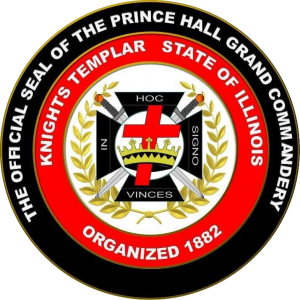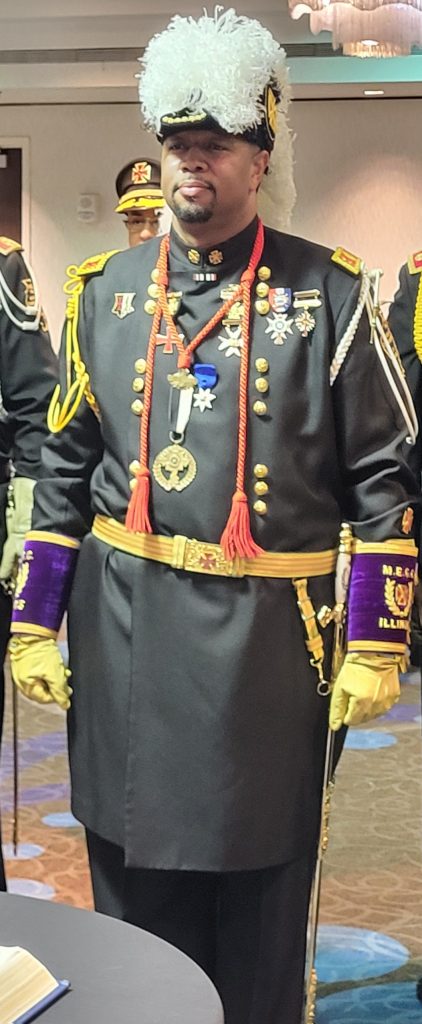
Most Eminent Grand Commander
M.E Sir Joseph L. Williams
R.E. Grand Commander Deputy
R.E. Sir Brian Burton
R.E. Grand Generalissimo
R.E. Sir David Fields
R.E. Grand Captian General
R.E. Sir Philip Patton, Jr
R.E. Grand Prelate
R.E. Sir Brian Beatty
R.E. Grand Sr. Warden
R.E. Sir Eugene Smith
Grand Jr. Warden
R.E. Sir Shannon Callahan
R.E. Grand Treasurer
R.E. Sir David Thomas, HPREGC
R.E Grand Recorder
R.E. Sir Brian T. Kendrick
Assistant Grand Recorder
E. Sir Nicholas Bell
E. Sir Carl Richarson, HPEGC
R.E. Grand Instructor
R.E Sir Vincent W. Jackson, Sr.
Assistant Grand Instructor
R.E. Sir Raymond Kimbrough
E. Sir Ivan James IV
Grand Trustee
R.E. Sir William Alston -1yr
R.E. Sir Lethaniel Hood -2yr
R.E. Sir Ronald Hill -3yr
R.E. Sir David M. Dotson, Jr. -4yr
Grand Warder
E. Sir Reinaldo Walker
Grand Standard Bearer
E. Sir Troy Graves
Grand Sword Bearer
E. Sir Andre Hannah
Grand Sentinel
E. Sir Richard Berry
Grand CCFC
Damon P. Anderson, Sr., HPMEGM
Grand Quartermaster
E. Sir Michael Harper, HPEGC
Chief of Divisional Commanders
R.E. Sir Raymond Kimbrough
Deputy of Illinois
M.E. Charles Holiday, Jr. PMEGC
Historically, the Order of the Knights Templar was established to protect pilgrims on their way to the Holy Land. As a military order, their efforts were performed with such zeal that Chivalric Masonry was designated to commemorate the qualities exhibited by those Knights of the past and the active promotion of the Order by English Freemasons led to her growth in America. By chivalry, the methods of training and standards of behavior for knights in the Middle Ages defined the code of conduct for knights. This code of chivalry emphasized bravery, military skill, generosity in victory, piety, and courtesy to women.
The first instance of the Order among American blacks was in the State of Pennsylvania in the 1820s. Passey Benjamine, native of the West Indies, was authorized by the Duke of Sussex, Grand Master of England, to establish Commanderies in America and the West Indies. Upon becoming a resident of Philadelphia, Benjamine became a member of the Philadelphia African Lodge and established St. George Commandery from its members in 1820. With additional Commanderies established by the early 1830s, the First African Grand Commandery of North America was formed in 1832.
During this time frame a split occurred within the Grand Lodge of Pennsylvania causing the creation of the Hiram Grand Lodge within the State. The schism spawned two separate Grand Commanderies in 1844 – First African Grand Commandery and Hiram Grand Commandery. Both existed separately for more than thirty years until merging on October 20, 1881 into the United Grand Commandery of Knights Templar. Commanderies within the State of Illinois were established from members of Holy Royal Arch Chapters within the state and were initially subordinate to the First African Grand Commandery of Pennsylvania. As a sufficient number of Commanderies had been established in Illinois during the mid 1800s, the basis upon which a new Grand Commandery for the state could be organized was set. As such, the Prince Hall Grand Commandery of Knights Templar for the State of Illinois was established in 1882 from these roots.

